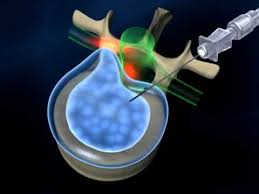
NEW APPLICATIONS IN THE TREATMENT OF WAIST AND NECK HERNIA
Spine pain is one of the most common pain problems affecting the majority of the society. There are cushions called discs between the bones of the spine to facilitate the carrying of the resulting load and to provide elasticity in movements. The herniation of these discs to the extent that they compress the nerves coming out of the spinal canal for various reasons is called disc herniation. The area that is most exposed to the weight of the body is the lumbar region of the spine. For this reason, hernia discomfort occurs most frequently in the lumbar region of the spine and is called “lumbar hernia”. In the neck region, which is the uppermost region of the spine, problems related to neck hernia occur in the same way and cause neck, shoulder and arm pain.
Every pain originating from the waist and neck region may not be due to hernia. Calcifications in the bones forming the spinal canal, narrowing in the spinal canal or adhesions that occur in the canal due to a previous spinal surgery are also factors that can cause low back and neck pain.
Therefore, the patient should be evaluated by a specialist physician and the correct diagnosis should be made after the necessary radiological examinations are performed. After the correct diagnosis, a wide range of patients are treated, ranging from drug therapy to surgical intervention, depending on the severity of the condition.
Pain due to low back and neck hernia usually spreads along the compressed nerve root to the arms or legs. The sensation of pain indicates that the nerve is under pressure, but that no permanent damage has occurred yet. As the pain begins to decrease over time, problems such as loss of sensation in the affected area or weakness in the muscles occur are findings suggesting that the hernia has grown to such an extent that it can damage the nerve.
In cases of severe weakness or numbness in the legs or arms, immediate surgical intervention may be required to avoid permanent damage to the nerves.
In order to eliminate this problem, first of all, specialist physicians should be examined and correctly diagnosed. In suitable patients for whom the emergency surgery option is not considered, very small channels are created with special needles that allow us to reach the herniated disc, which we call percutaneous methods, and closed surgeries performed under local anesthesia can be performed without the need for narcosis. These are:
1- Laser discectomy: Reduction of the herniated disc area by direct laser application.
2- Discogel application: Reduction of disc volume, hence hernia, as a result of applying gelled alcohol into the disc.
3- Micro decompression: Evacuating the contents of the herniated area of the disc with the help of a mechanical system.
4- Ozone nucleolysis: Application of ozone into the disc.
How is the application made?
All these treatments are performed in germ-free operating room conditions and accompanied by radiological imaging. The patient is placed in the prone position. The intervention area is wiped with a solution to get rid of germs. The region with herniated disc is marked radiologically. The intervention area is anesthetized by applying a local anesthetic to the lumbar region of the patient. A special cannula is placed into the targeted disc and the appropriate treatment method is applied. After the intervention, the patient is kept under observation for 1-2 hours. He is then sent home on foot. During the next 1 week, it is recommended that the patient avoid work that may cause weight in the lumbar region, so that the recovery can be faster. At the end of the 4-week control period, the procedure can be repeated depending on the degree of clinical improvement.
The biggest advantage of these treatments, which are performed with the closed method, is that they are applied with local anesthesia without the need for narcosis, patients can go home on foot without the need for hospitalization after the intervention, and adhesions that may occur in the hernia area after open surgery are not in question after these treatments.

